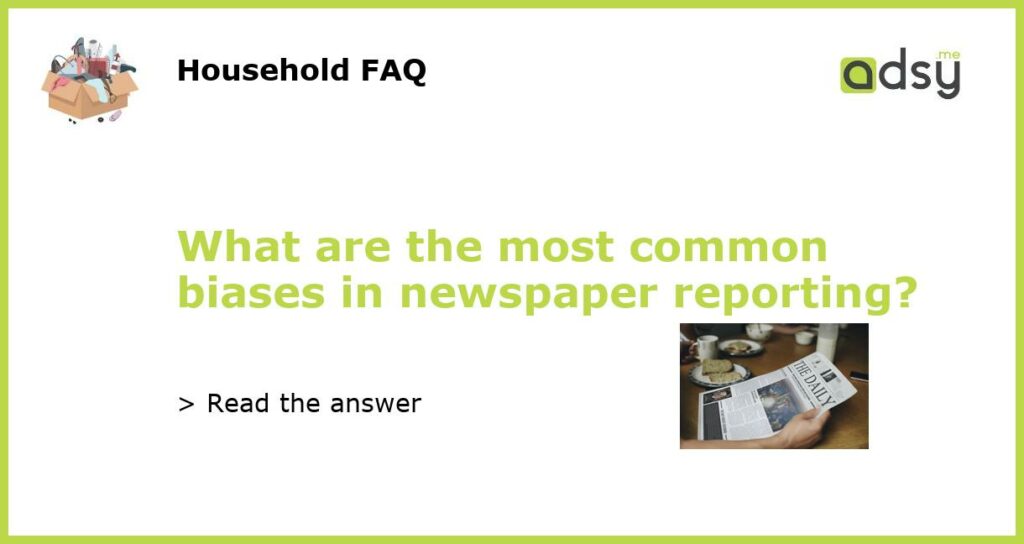The Role of Biases in Newspaper Reporting
Newspapers, like any other media, are often accused of biased reporting. Biases are often thought of as leaning towards a certain political or ideological perspective, but they can take many forms. Biases can be caused by a variety of factors, including editorial decisions, the reporters’ point of view, and the effect of media owners.
The Confirmation Bias
The confirmation bias is one of the most common forms of bias in newspaper reporting. This bias occurs when a reporter or editor looks for information that confirms their preexisting beliefs and ignores evidence that contradicts them. Confirmation bias leads to media outlets publishing stories that are not objective or balanced. Instead, they tend to reinforce the biases of their readers or viewers.
The Availability Bias
The availability bias refers to the tendency of reporters to overemphasize recent or easily available information. This can lead to a distorted view of a subject, as the information presented may not be representative of the full picture. For instance, if there is a lot of noise coverage about a specific topic, it may seem more pressing than it really is.
The Framing Effect Bias
The framing effect bias occurs when a story is reported in a particular way that influences its interpretation. Often, the framing of a story can dramatically alter the individual’s understanding of it. Thus, media can distort the news by framing it in a particular way to influence public opinion. This bias tends to be invisible to the everyday reader, as it is subtle and usually takes place in the background.
The Sensationalism Bias
The sensationalism bias is the tendency of media to publish stories that are attention-grabbing or startling, often at the expense of accuracy. This type of bias is often motivated by the desire to increase readership or viewership. The effects of sensationalism bias can be harmful because it may opt for exaggeration or even misinformation at times over objective reporting.
The Final Analysis and Solution
The media’s biases can have disastrous effects and can damage their reputation in the long run. To address the issue, newspapers and other media should maintain the highest standards of accountability and transparency. It’s essential to cultivate a working relationship with the audience while ensuring that they adhere strictly to journalistic ethics. Doing so also means admitting to their mistakes and taking corrective action where necessary.






